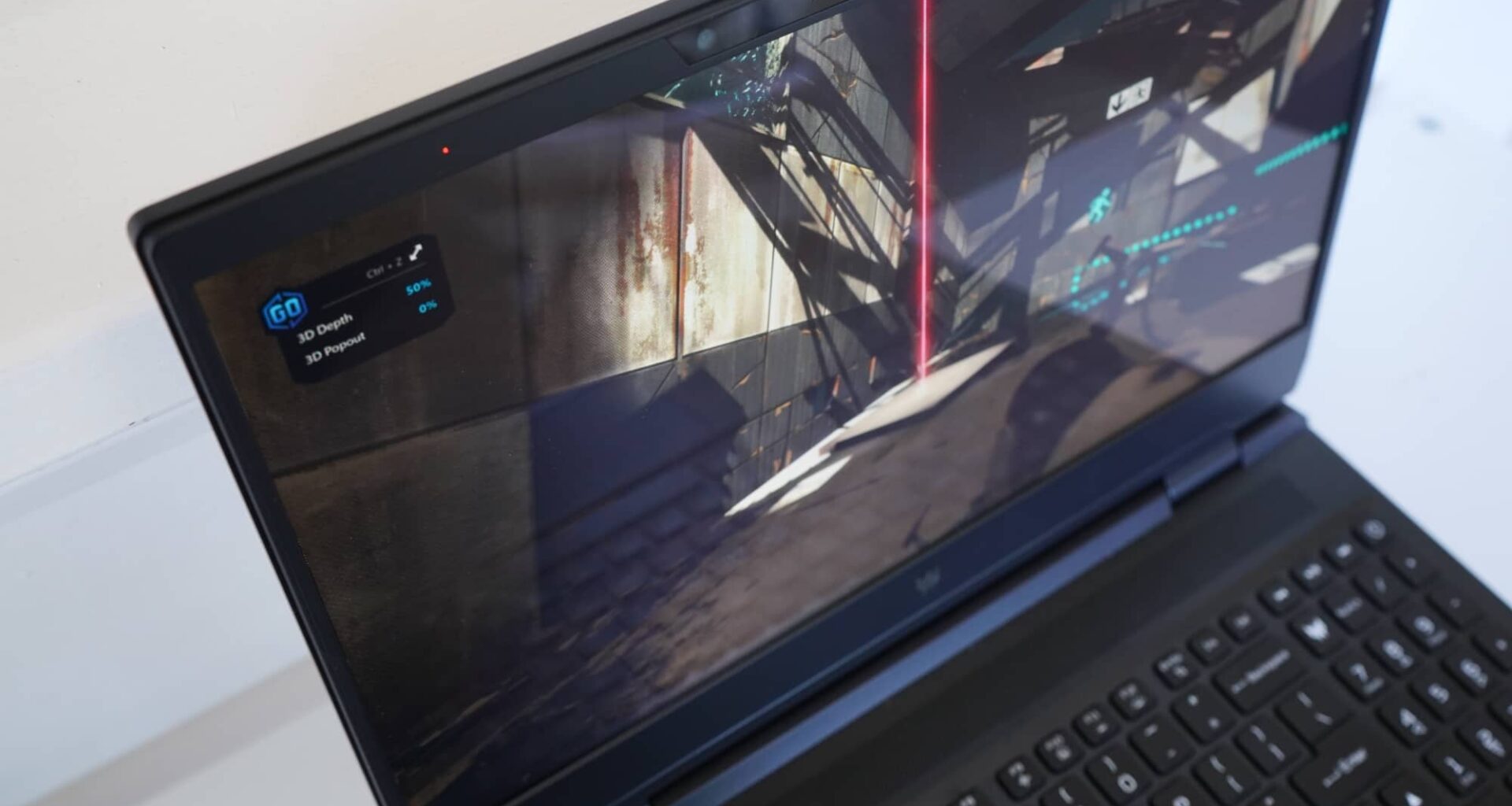Quick review
The good
The not-so-good
Gaming machines are typically meaty and made to handle the latest titles, but the Acer Predator Helios 3D 15 has one other trick, and it’s all in the name.
Design
Big, meaty, and made for gamers looking for something a little different, the Acer Predator Helios 3D 15 isn’t your ordinary gaming computer, though it does share some design touches you can find across almost all gaming laptops.
A dark angular design, obvious vents, colourful LEDs at the back and under the keyboard, and the screen hinge not quite at the exact back… yes, this is a gaming laptop.
Little about it stands out as being different — it could be any gaming laptop — and the weight certainly screams it, too, tipping the scales at 2.98 kilograms. Bring a backpack, you’re going to need it.
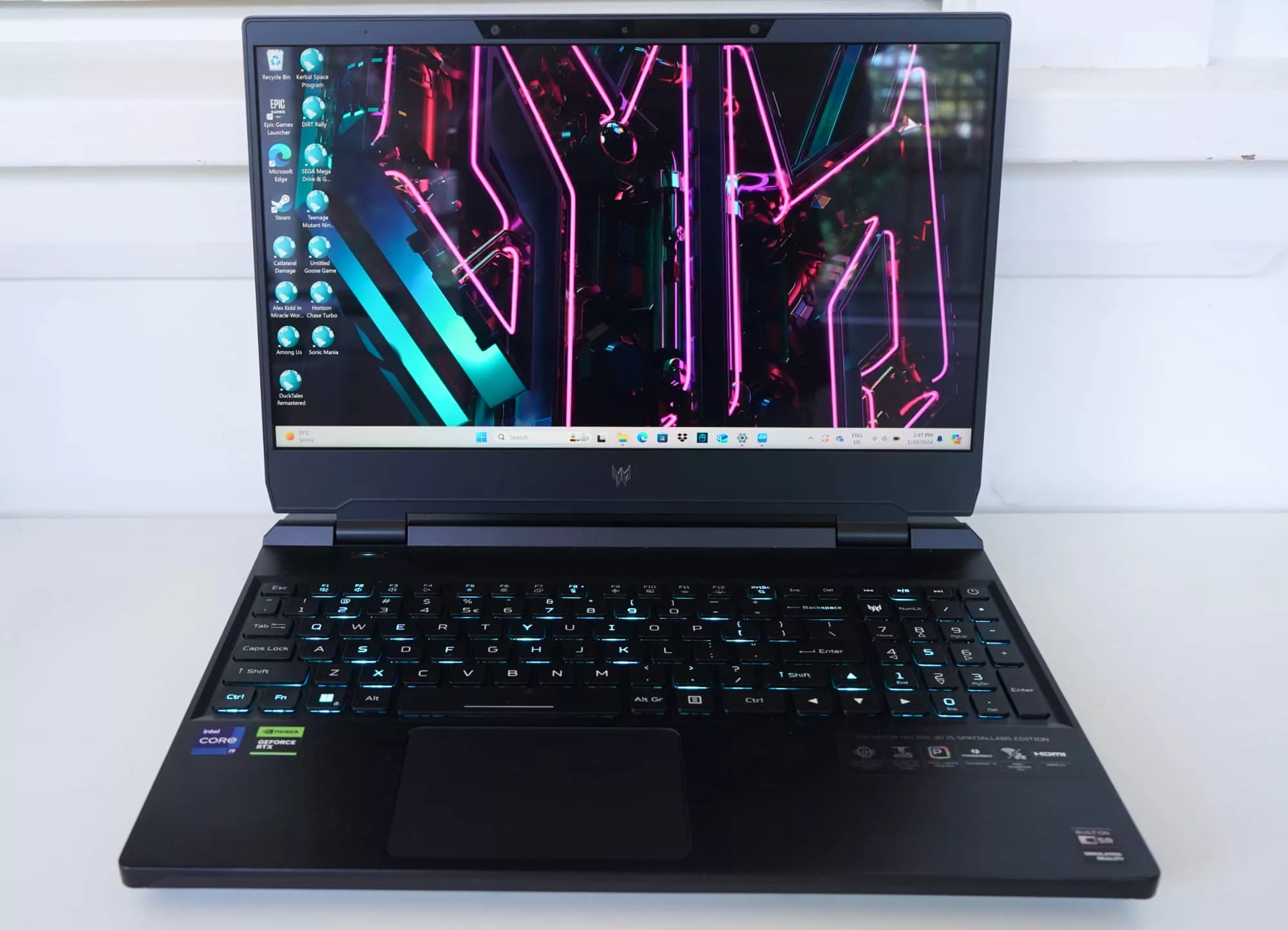
Features
Inside is a hefty set of specs not unlike premium desktops, as Acer pushes beyond the typical assortment of Core i7s we normally see. Instead, you can expect to find an Intel Core i9 13th-gen, the 13900HX, a 24-core chip from last generation rather than the AI-enabled Core Ultra chips of last year, or even the follow-up we know is coming shortly.
That’s paired with 32GB RAM and a 2TB SSD, giving you plenty of room in memory and storage, as well as Windows 11 Pro out of the box.
Graphics are also high-end, with a dedicated GPU in the form of the Nvidia GeForce RTX 4080 armed with 12GB RAM, a meaty amount there for games, which the rest of the system is clearly marked for.

You’ll find plenty of connections, too, covering microSD, HDMI, three USB over both the rectangular Type A and standard USB-C, as well as a network port and headset jack. Meanwhile, wireless is covered by Bluetooth 5.1 and 802.11ax WiFi 6E.
Two cameras can be found up top, allowing the webcam setup to work in stereo, which is designed to play nicely with the screen.
| Model | Acer Predator Helios 3D 15 SpatialLabs Edition |
| Chip | Intel Core i9 13th-generation 13900HX |
| RAM/Storage | 32GB RAM; 2TB |
| Display | 15.6 inch 4K 3D display |
| OS | Windows 11 Pro |
| Connections | WiFi 6E, Bluetooth 5.1, USB-C, USB-A, HDMI, Ethernet, 3.5mm |
| Size/Weight | 27.9mm, 2.98kg |
| Price | Starting from $7599 AUD |
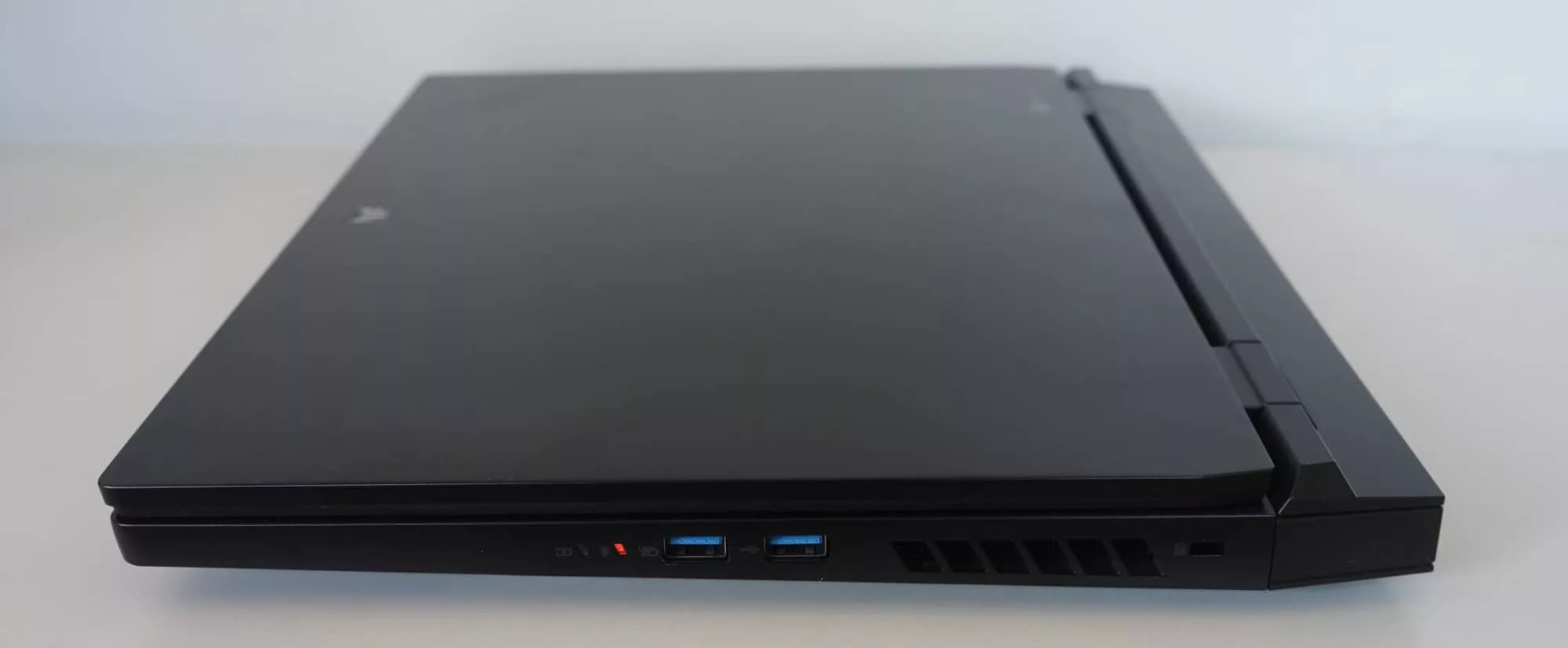
Display
Then there’s the screen itself.
One of the special features, the 15.6 screen on the Helios 3D Spatial edition is — as the name suggests — 3D capable. Specifically, it can load visuals in a 4K 3840×2160 resolution for standard two dimensional pictures, or flip the script and run two 1920×1080 screens on top of each other for three dimensions. It’s unlike any other laptop screen out there.
Using a standard In-Plane Switching display, you won’t find touch here nor will you find QLED or OLED like some other displays, and it runs at a fairly ho-hum 60Hz for gamers. None of that fast 120 to 240Hz refresh rate tech gaming machines are known for.
Really, 3D is the special feature of the Acer CineCrystal display and that’s it.
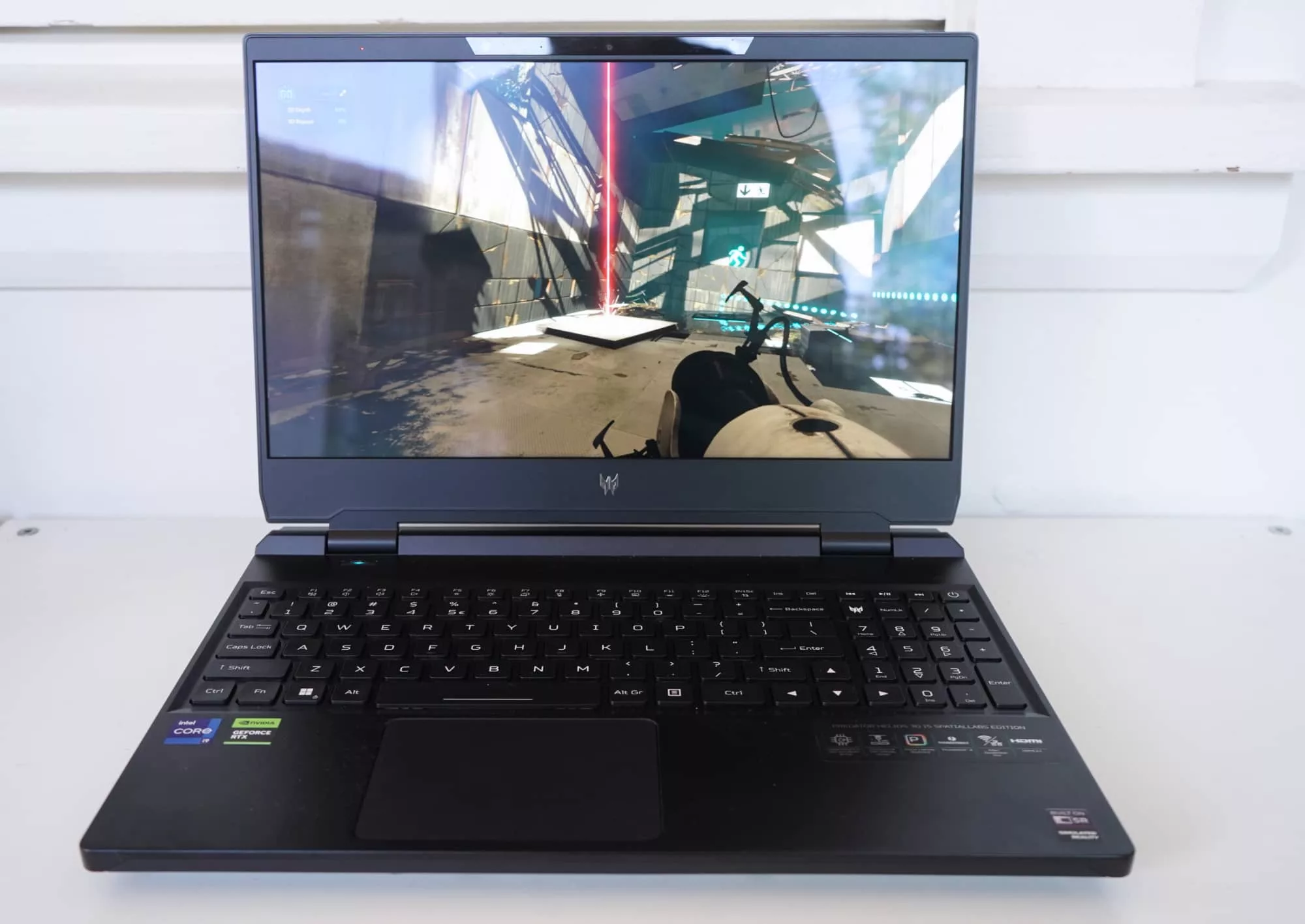
In-use
Using the computer is about like any other laptop, with a large keyboard and trackpad waiting for you when you open the machine up.
The keyboard aims to be a full-size keyboard, but doesn’t quite nail the key design, offering a somewhat cramped middle and right side where aspects feel squished. The keyboard can also feel overly soft, so even though each key does hit the mark, it’s not a satisfying keyboard to use.
That softness is apparently a vibe, shared with the trackpad which is also soft and doesn’t always send your clicks home to the right location.
Bring an external mouse if you plan to seriously game. You’ll thank us later.
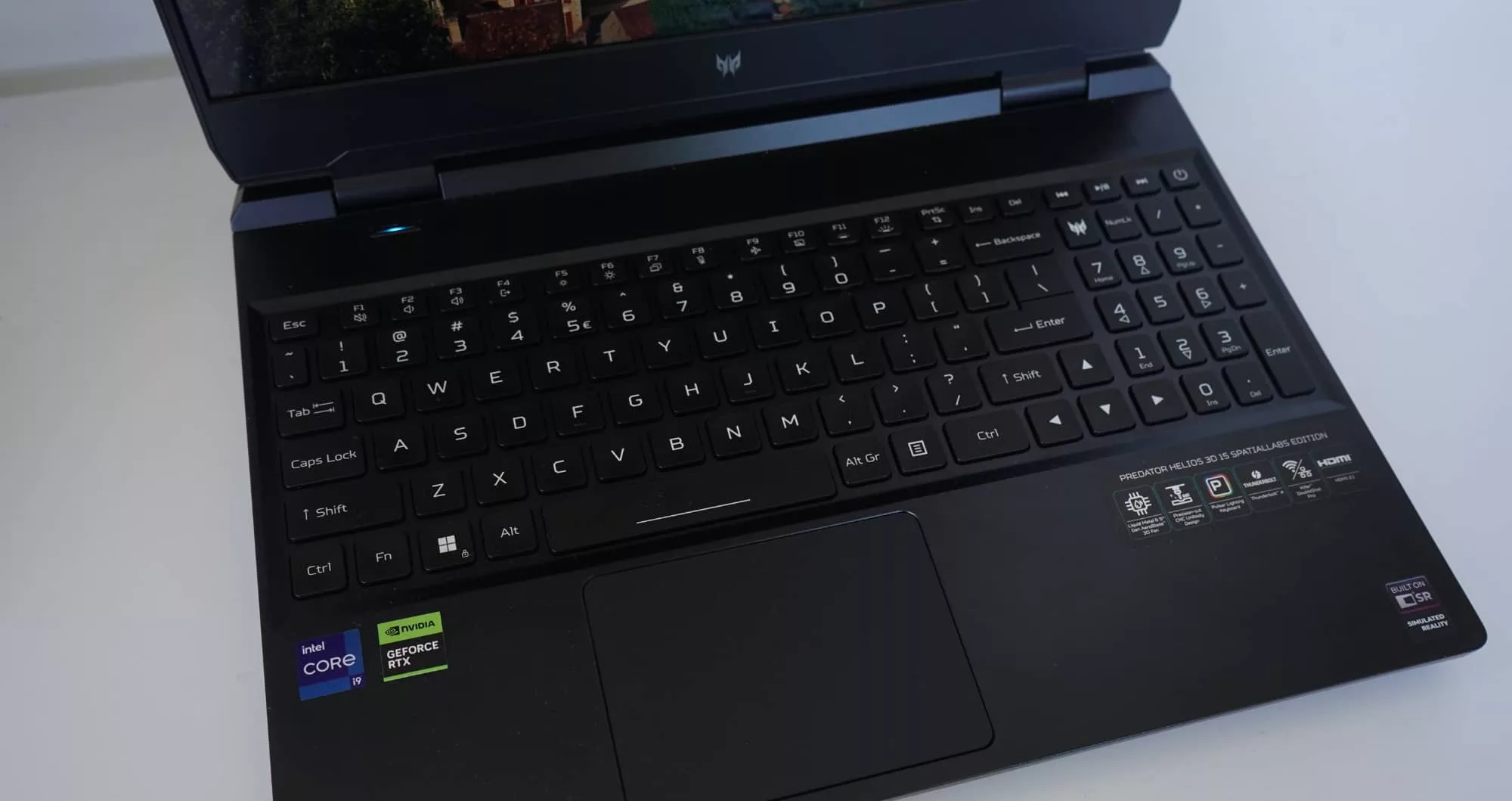
Performance
Powering on with a loud whoosh sound and lighting up blue randomly under each key, the Predator Helios 3D 15 switches on with gusto. Unfortunately, it also fires up the fan almost immediately after which almost reveals a gust, particularly by sound.
From the get go, you’ll get the feeling that’s the norm for this machine, and you’d be right.
Armed with an Intel Core i9 inside and an Nvidia GeForce RTX 4080, the system is understandably meaty, but it’s also hefty for power and needs to be controlled. You’ll hear that control pretty much the entire time using the laptop, but the benchmarks scream just how capable this system is: it floors everything.
There’s more grunt than the recent Asus ROG Zephyrus 14, and while Apple’s M3 Max MacBook Pro has more processing power, the graphics don’t quite match the Geforce RTX 4080 in the Predator. Performance to spare, it seems.
As it works, colourful lights are pushed out of the back, just as you’d expect from a gaming laptop.
It has the guts and the lights, and it’s ready for just about anything you can throw its way, though you may find the odd hiccup here and there. Despite the impressive level of performance, we found games weren’t always perfectly stable, though they did catch up.
3D gaming
The most intriguing aspect of the Helios 3D 15 isn’t that it’s a gaming PC, though. It’s something more than that: a gaming PC with a 3D screen, and that’s unusual.
It won’t be switched on for everything, and before you ask, Windows 11 doesn’t look like anything in particular with a 3D screen. Like most computers, the Acer Spatial Labs laptop will show most things in two dimensions.

To get to the 3D element, you need to go through the Spatial Labs software, of which there are a few features. There’s a video player for interpreting side-by-side 3D video, a 3D model app, and of course, a game loader which supports somewhere around 150 titles.
Spatial Labs also includes an app titled “SpatialLabs Go”, which is basically a button able to switch on a 3D stereoscopic experience for any game that will work with it, though not every title will.
Portal 2 did, but Adr1ft did not, while our regular favourite No Man’s Sky was one of the few games we owned supported by Spatial Labs game launcher.
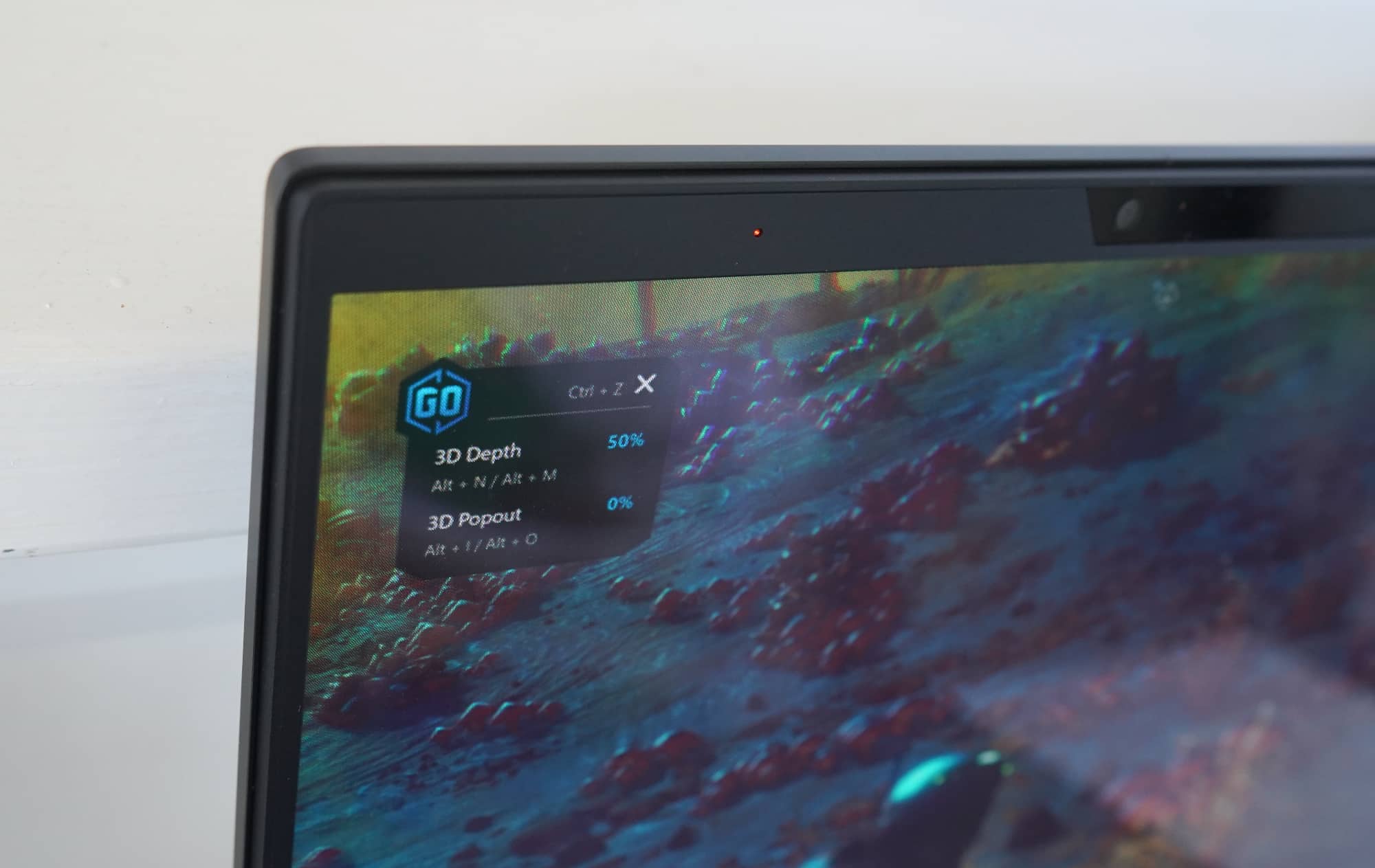
When you get a game working, you’ll find the display turns on the stereo camera and delivers a depth-based 3D experience largely based on where your eyes are tracked, and it is a little surprising.
Depth is artificially added, which in turn can be a little off-putting until you adjust. All of a sudden, limbs and weapons are facing forward, while the level of depth control is all in your control.
Acer is definitely adding a different experience here, though it’s one that can also be quite buggy. In No Man’s Sky, for instance, the 3D mode crashed several times and definitely experienced obvious slowdowns. What appears to be happening is needing to render two sets of visuals twice — two Full HD gaming experiences on top of each other from a 4K render — and that may not play as nicely as you expect, particularly when on battery.
Acer’s Spatial Labs software even warns you about that: when it’s running on battery, the app advises you to plug the power in for optimal performance.
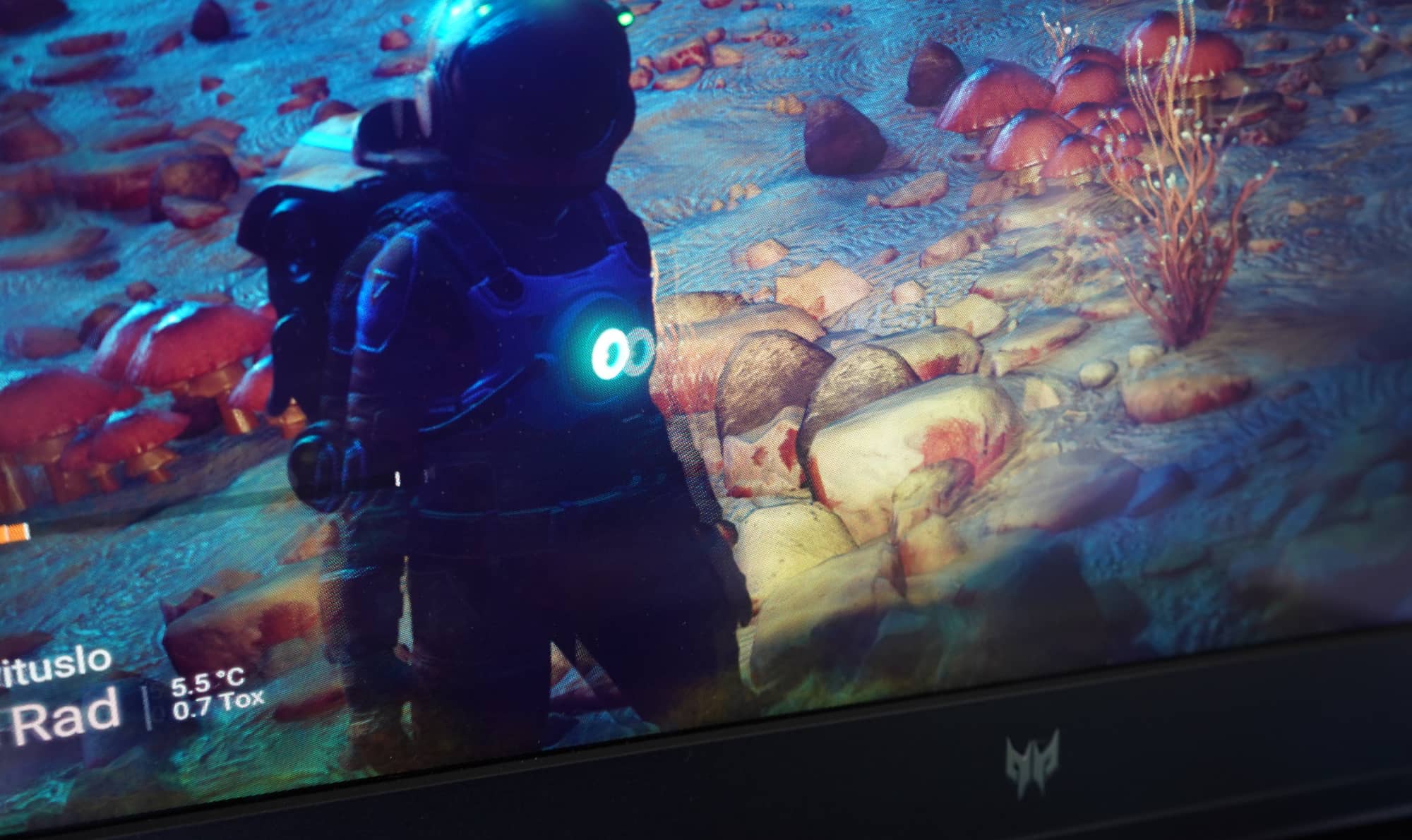
Battery
That should give you a good idea as to how the battery handles, with the answer being “not great”.
Throughout our review, we found the Acer Predator Helios 3D 15 managed a meagre 2 to 3 hours, though if you do less with the system, you can get more. Battery life is not the Predator’s friend. You might not even hit two hours.
On the one hand, we get why: the system offers too much grunt and a big ol’ screen, both of which chew that battery life like there’s nothing standing in its way, particularly when the 3D screen is switched on.
However, the power supply doesn’t help matters, being chunky, hefty, and heavy. Ignoring that the laptop weighs enough, the power supply weighs more than most chargers, too, with the 330W power supply really adding extra weight. We wish Acer had considered a GaN variant of the power supply to ease on size, but no such luck.

Value
The battery and weight are problems, but as cool as the technology is, so too is the price: it is prohibitively expensive.
Available in Australia for a staggering $7599, the Acer Predator Helios 3D is nearly the same level of exorbitant computer pricing we saw on the $8499 HP Foldable PC: a computer with such a high price for a niche feature set, it’s practically impossible to recommend.
Acer hasn’t gone with a folding screen, but like HP it has made the price largely about the screen. Instead of a folding display, however, the Acer display is basically two screens in one, allowing you to see a 3D picture when needed.
The idea is definitely clever, resulting in a massive three dimensional image not unlike the Nintendo 3DS, if you can remember it. Except, instead of a Nintendo jolly, imagine your game pictured through that stereoscopic lens.

What needs work?
The problem is that however clever and fun and genuinely playful the Acer Spatial Labs Helios 3D laptop is, it is marred with problems. It’s a genuine grab bag of issues that a $7500 PC should not come with, and that Acer should have ironed out in the quality assurance process. Some are unavoidable — size, weight, sure — but others could definitely have been tweaked and improved.
Take the setup procedure: gaming systems have come a long way in the past few years, and don’t have to blindly follow just simply installing Windows and letting you fend for yourself.
The Asus ROG Ally handhelds are great examples of this, pre-installing the Asus Armoury Crate software and providing a way for you to get gaming going with speed, with shortcuts to gaming platforms and installs, control settings, lights, and more. Hub software that helps you get going without having to face Windows is a good thing.
For over $7K, the Acer Predator Helios 3D offers none of that. Welcome to Windows, fend for yourself. Even the Spatial Labs software seems ill-defined at times, and you’re basically feeling your way around much like how a golden retriever explores the world with its mouth (a fact we learned with rocks in a hairy golden tummy and a large vet bill).
Software is just one problem, but there are issues with the hardware.

Yes, the 15.6 inch Helios 3D is large and heavy, a fact that’s probably unavoidable, but the fan also spins up randomly and gets really loud, often when you’re not doing anything that needs the fan to be on.
The keyboard and mice aren’t great, and Acer not only spent no time shrinking the ridiculous 330W power supply, it also happens to be one of the few laptops that can’t be charged using USB Type C. Never mind that Type C is a standard, because this laptop won’t take it. We tried.
It’s just such a hefty machine with equally hefty requirements. In a few years when Acer manages to make this technology more power friendly, it should be a lot better. Right now, it’s just not there.
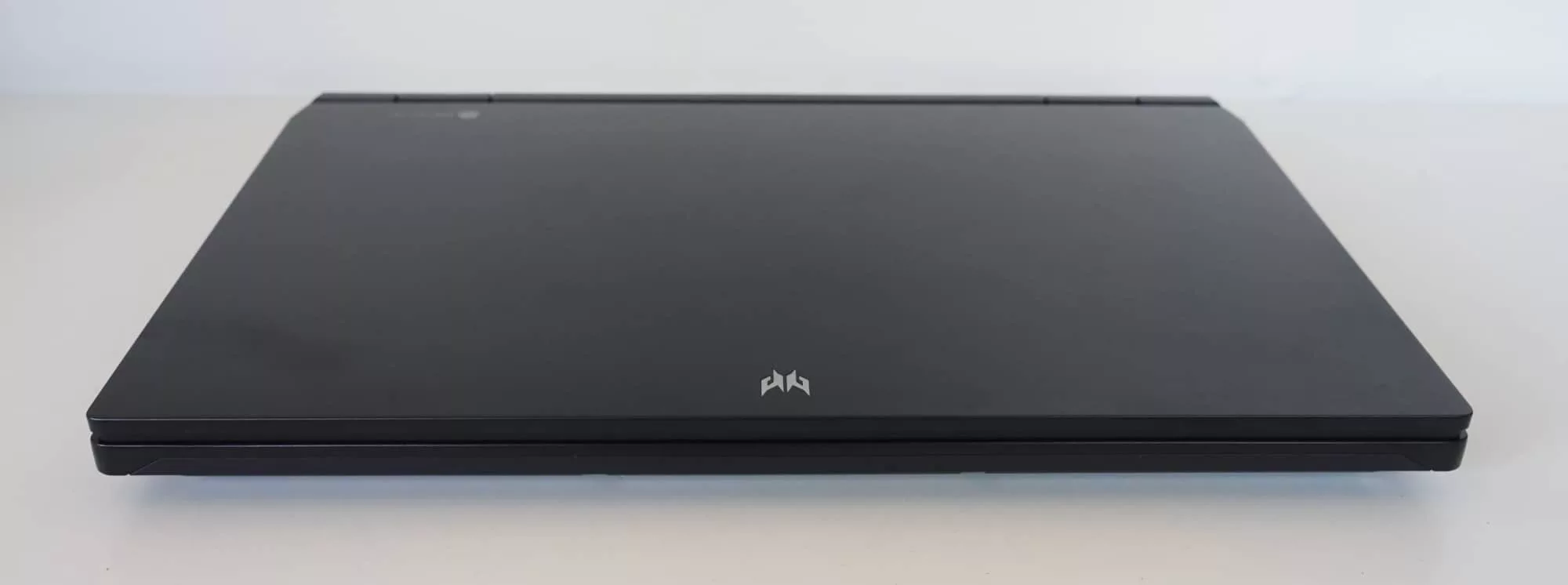
Final thoughts (TLDR)
In the Acer Helios 3D Spatial Labs laptop, you are paying for the screen and what it does. And that’s a problem, largely because $7K is a high price for 3D, even though the whole thing feels like a gimmick you mightn’t actually use.
It’s certainly not a portable computer in the sense you’ll typically associate laptops, either. The chunky power supply and paltry battery life make it difficult to take with you, and even the software warns you when it’s unplugged. Rather, it’s closer to a desktop made slightly more portable, much like old 17 inch computers used to be.
If money is no object and you’re after a gaming laptop with a difference, this is certainly it. But you’re not going to be taking the Predator Helios 3D many places, so make sure you know what you’re getting yourself into.



